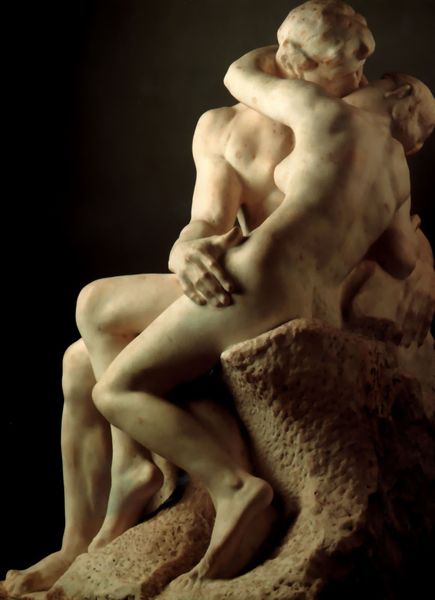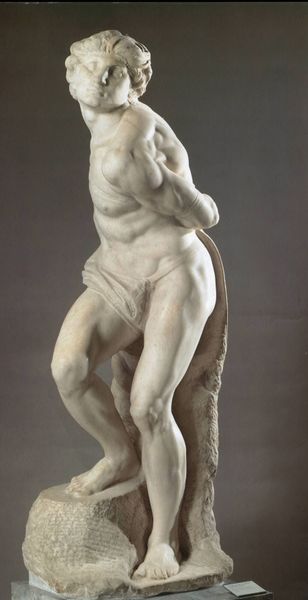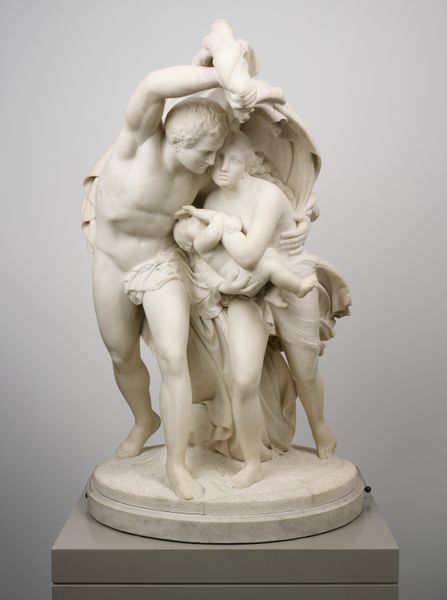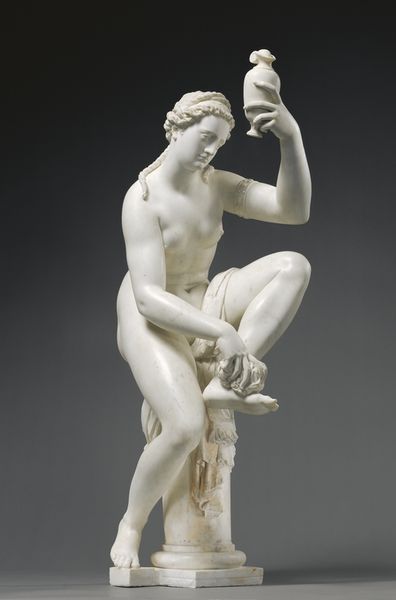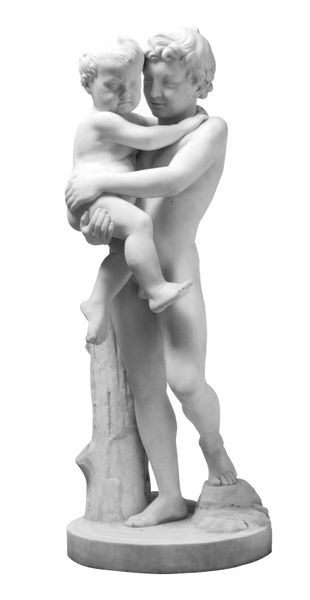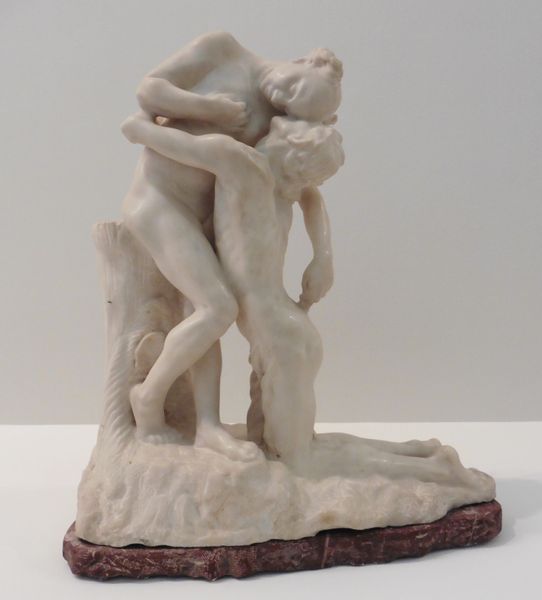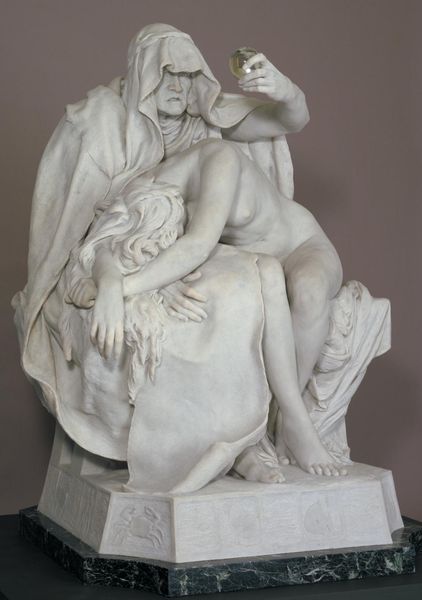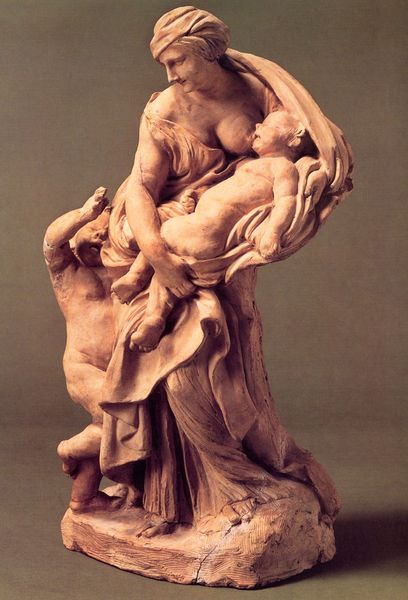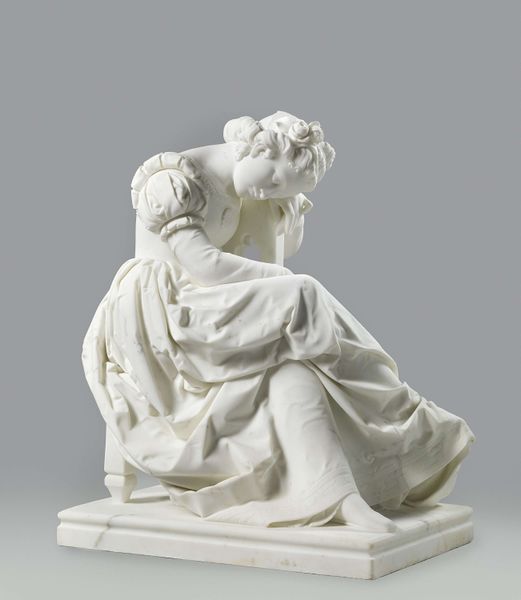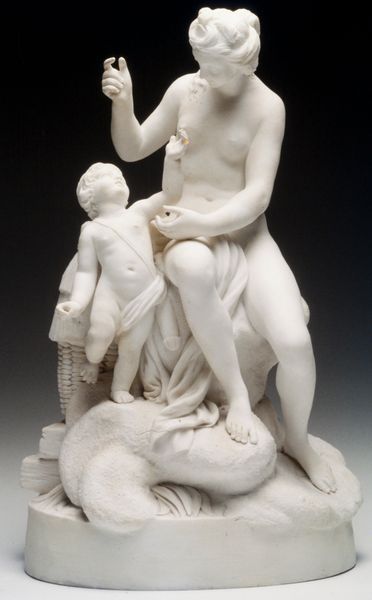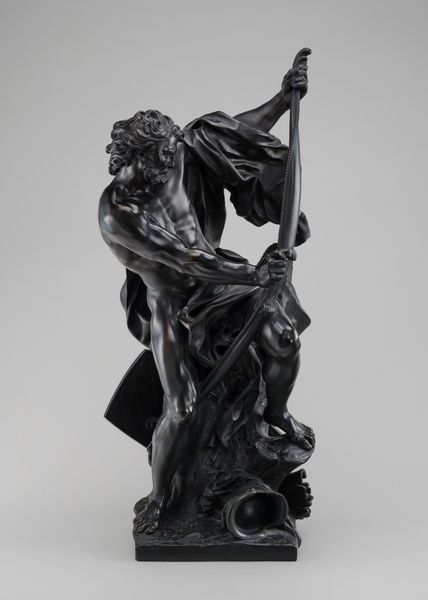
Copyright: Public domain
Curator: Before us, we have Auguste Rodin's marble sculpture, Romeo and Juliet, dating from 1905, currently held at the Hermitage Museum. Editor: There's an immediate sense of vulnerability; the smoothness of the marble gives the figures a softness, an almost painful intimacy. They're intertwined, but their faces are hidden. Curator: That concealing adds to the complexity. Consider the marble itself—a prized material, requiring immense skill and labor to shape. It speaks volumes about value, not just artistic but also the cultural capital assigned to tragic love stories and their production through laborious carving processes. Editor: Indeed, the figures lack classical idealism; it isn’t perfect beauty on display. Rather, there is a poignant rawness, capturing the essence of intense youthful love shadowed by doom. Their pose, clinging to each other, reminds me of funerary monuments. Do you see death echoed there too? Curator: Definitely. The visual language borrows heavily from funerary art, emphasizing love but inextricably intertwined with mortality. The support structure even suggests a pedestal, blurring life and remembrance through materiality. We view their love as an enduring artifact thanks to Rodin's and subsequent conservation work and presentation within a museum. Editor: It's thought-provoking how Rodin presents a classical narrative not as a triumphant representation of love, but one laced with an inherent tragic fate. The closed composition and delicate curves intensify the emotions; a sort of claustrophobia in love’s doomed trajectory. Curator: Right, it highlights the inherent drama in crafting such grand themes with traditional methods; by utilizing historical means of making sculpture, Rodin acknowledges a collective, perhaps flawed, artistic history which Romeo and Juliet has always been part. It asks us to confront the weight of legacy and our own consumption of its representation in object form. Editor: Ultimately, Rodin encourages viewers to look inward, beyond a famous story, tapping into our own shared humanity and experiences regarding love's complex symbolism. Curator: Well put. For me, the process and the physical result is evidence of love turned into material and how intertwined death is when we continue viewing, showing, or conserving Romeo and Juliet in spaces such as the Hermitage.
Comments
No comments
Be the first to comment and join the conversation on the ultimate creative platform.

